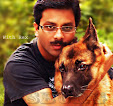Long-Term Breed Sustainability & Conservation Genetics in the German Shepherd Dog
1. Population Genetics: The Backbone of Sustainable Breeding
1.1 Effective Population Size (Ne)
This numbers are examples of genetically meaningful contributors; not the true count of dogs.
- Today the clubs and breed authorities have registered a huge number of dogs, but the effective populative size is too low -- may not be even 10% of the registration volume due to overuse of certain lines. For example, if the overall number of registered dogs is 50,000, the effective population size may be far below even 200.
- An Ne index below 100
indicates potential risk of long-term genetic decline.
- An Ne index below 50
indicates active inbreeding depression and loss of vitality.
Historically,
the GSD’s Ne has been steadily declining due to line preferences, show-ring
trends and popular sire syndrome.
Effective Population Size (Ne) the number of dogs in a population that are actually contributing meaningful genetic diversity to the next generations.It is not the number of registered dogs, not the number of breeding dogs, not the number of pups born.It is a mathematical estimate of how many unique genetic contributors are shaping the breed’s gene pool.
2. The Bottleneck Threat: How German Shepherd Dog Genetics Are Narrowing
A bottleneck occurs when a small subset of dogs contributes disproportionately to future generations. In German Shepherds, this is driven by:
2.1 Popular Sire Syndrome (PSS)
A single male that wins major shows or earns high working accolades can produce hundreds or even thousands of descendants.
Consequences: Increased homozygosity (means decreased genetic diversity, leading to inbreeding depression)
In some countries, one male has contributed more than 5% of the country's GSD offspring population within a short span of time (for example 2-5 years). This has resulted a massive genetic bias.
2.2 Breed-Type Polarization
At present, the global German Shepherd Dog population has effectively divided into:
- Working line (West German, DDR, Czech)
- Show line (West German)
- American/Canadian line
Each
subpopulation breeds mostly within itself, reducing cross-line genetic flow and causing micro-bottlenecks. This is another reason for reduced genetic diversity in GSD breed.
2.3 Narrow Female Base
Even more critical than male diversity is maintaining a robust dam population. The breed suffers from:
- Small number of actively bred females with diverse genetics.
- Repeated use of dams with a few specific lines
- Not considering the healthy females just because they lack show or working titles
This shrinks maternal genetic representation significantly.
3. What Genetic Decline Looks Like in Real Terms
If a
breeder ignores population genetics, the consequences appear gradually but
inevitably:
3.1 Increased Disease Prevalence
GSDs already face several inherited conditions:
- Degenerative Myelopathy
- Hip & elbow dysplasia
- Pancreatic acinar atrophy
- Allergies & immune
dysfunction
- Bloat tendencies
Homozygosity
increases disease expression... even in the lines previously considered “clean.”
3.2 Decreasing Lifespan & Working Longevity
A breed’s average lifespan correlates with its genetic diversity. Breeds with high inbreeding coefficients (COI > 30%) often lose 1–2 years of expected life.
3.3 Behavioral Narrowing
Certain traits become exaggerated or lost:
- Excess sharpness
- Weak nerves masked by
training power
- Loss of environmental
stability
- Over-drive without clarity
- Or conversely, over-soft
temperaments in show lines
These are
genetic symptoms; not training failures.
Solutions for Serious Breeders
Breeders
with scientific discipline are now the only defense against long-term decline. Here are strategic, evidence-backed approaches:

























